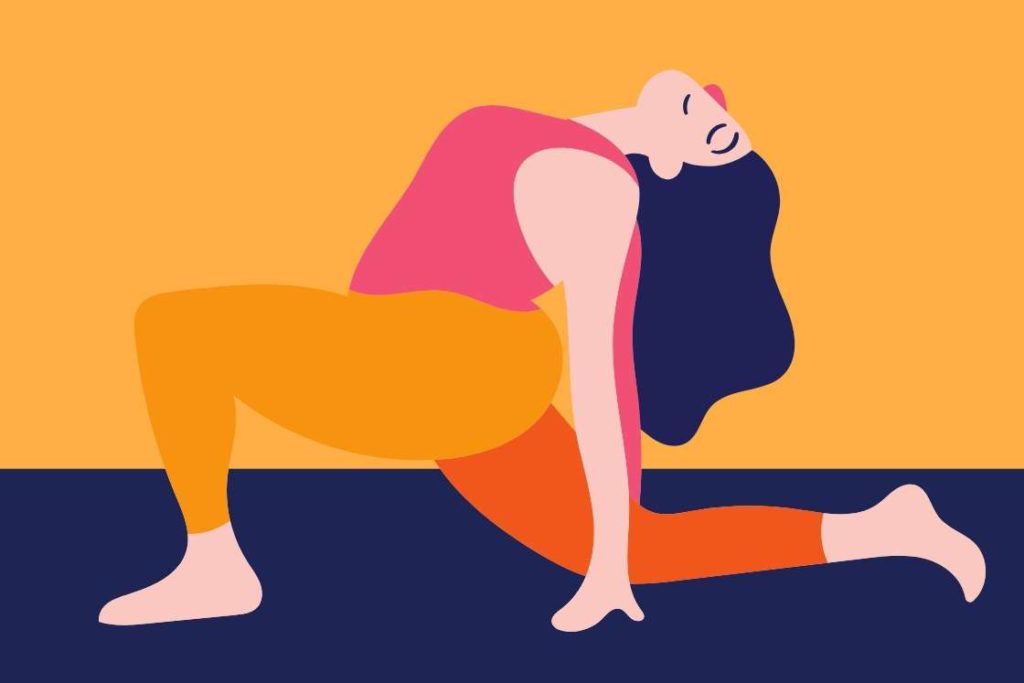
Ananda is a Sanskrit word that means ‘Bliss’, the bliss of your own higher Self. Unlike that bliss or happiness which we perceive by indulging in the mundane world, Ananda can be achieved only through inner awareness and peace.
Based on the concept of inner peace, Ananda Yoga is a unique style of yoga that emphasizes spiritual development.
What is Ananda Yoga?
Ananda Yoga style is based on the teachings of the famous yogi Paramhansa Yogananda. It includes hatha yoga practices like Asanas, Pranayamas, meditation techniques, and Applied yoga philosophy. These practices combinedly establish a harmonious coexistence of your physical body, energy flow, emotional construct, and intellectual framework. The harmonious coexistence of different existential aspects of your being is the central focus of the Ananda Yoga system.
It was founded in 1968 by Swami Kriyananda, one of the direct disciples of Paramhansa Yogananda. Yoga asanas used in the Ananda yoga sequence are different hatha yoga postures, which were at the heart of Yogananda’s teachings.
This style of yoga focuses specifically on helping the practitioner attain inner bliss. Our Atman is said to be enclosed within 5 layers of our existence, the PanchKoshas. The layer Closest to the Atman is the Anandamaya Kosha which is integrally responsible for our inner bliss. Ananda Yoga helps you stimulate the Anandamaya Kosha, and takes you closer to the core spiritual essence of yogic practices.
Unique Approach and Practice

Ananda yoga at its core is a personal and inward experience, over an extensive physical routine. It uses the asana, pranayama, and Dhyana to regulate the energy flow and synchronize you with the universal consciousness. Here the asana practice is often modified to suit the practitioner’s needs and abilities, rather than forcing like in a traditional posture.
Ananda yoga uses three unique approaches that set it apart from other yoga styles: the sequence, energization exercises, and affirmations.
1. The Ananda Sequence
The Sequence used in the practice of Ananda yoga can itself be considered a dedicated tool for generating bliss. The sequence starts with the standing asanas to stimulate the prana flow along the spine. Then comes sitting and lying floor poses. This helps the energy flow outwards from your spine and towards your extremities. The floor poses end with spine twists and stretches that refill the spinal axis with vital air and energy.
The next inclusion in the sequence is of the inversion poses, that channel the energy towards your chest, throat, and brain; the upper chakras. Then the penultimate practice includes Savasana for deep relaxation. The Savasana helps inward withdrawal of your senses (pratyahara) which allows the energy to integrate with your brain.
The last in the sequence comes, obviously, meditation. Meditation gives aesthetic perfection to the spiritual nature of the Ananda practice. Meditation assimilates all the benefits generated by the previous steps and channels towards the upliftment of your consciousness, stimulating your Anandamaya Kosha for inner bliss.
2. Recharge with Energization Exercises
The energization exercises used in Ananda Yoga were introduced by Yogananda, who mentioned in his autobiography that our body is like an electrical battery that can be recharged with energy at will, through a series of breath-movement synchronized exercises. Yogananda mentioned 39 such exercises that can teach us to control our Prana (life-force). These energization exercises also train the nervous system to support an increased flow of energy.
39 energization exercises of Ananda yoga include techniques like double breathing, spinal rotation, 20-part body recharging, 4-part arm recharging, fencing, and such. The practitioners believe that these techniques help draw cosmic energy in the body, and direct it by a conscious will to recharge various parts of the body.
The double breathing technique is a very interesting a powerful technique, that can enhance the oxygenation and detoxification of your blood. In double breathing you take a short and sharp breath in through your nose, followed by a long breath in, filling up your lungs. Then without a pause, make a short and sharp exhalation through your mouth and nose, and then a long exhalation emptying your lungs.
3. The potency of Affirmation
In Ananda yoga, each asana is assigned with an affirmation. The affirmations are considered to enhance the spiritual and life-force regulation benefits of the poses.
The words you speak and hear have more impact on your existence than you realize. Words have the ability to alter the course of flow of the life force, enhance its potency or diminish it. Drawing from this idea the technique of affirmation includes silent chanting (and visualizing) of specific meaningful words, with specific asanas.
The affirmation helps and guides you in how you feel towards a specific pose, and thus allowing the pose to have an appropriate influence on your life force. Following are some popular affirmations used with some popular Ananda asanas:
- Adho Mukha Svanasana – Calmness radiates from every fiber of my being
- Halasana – New life, new consciousness now flood my brain
- Janushirasana – Left and right and all-around life’s harmonies are mine
- Ardha Matsyendrasana – I radiate love and goodwill to soul-friends everywhere
- Jathara Parivartanasana – I open to the flow of God’s life within me
- Matsyasana – My soul floats on waves of cosmic light.
- Baddha Konasana – Secure in my Self, I accept whatever is
Ananda Yoga Poses
Ananda Yoga, in terms of poses, is built on the hatha yoga poses. You can include any hatha yoga pose in Ananda yoga, but focusing on the energy stimulation aspect of the particular pose. The energy impact of the poses is mentioned above, under the “affirmation” subhead.
The following are few Ananda yoga poses that have potent Ananda benefit.
1. Mountain Pose (Tadasana)
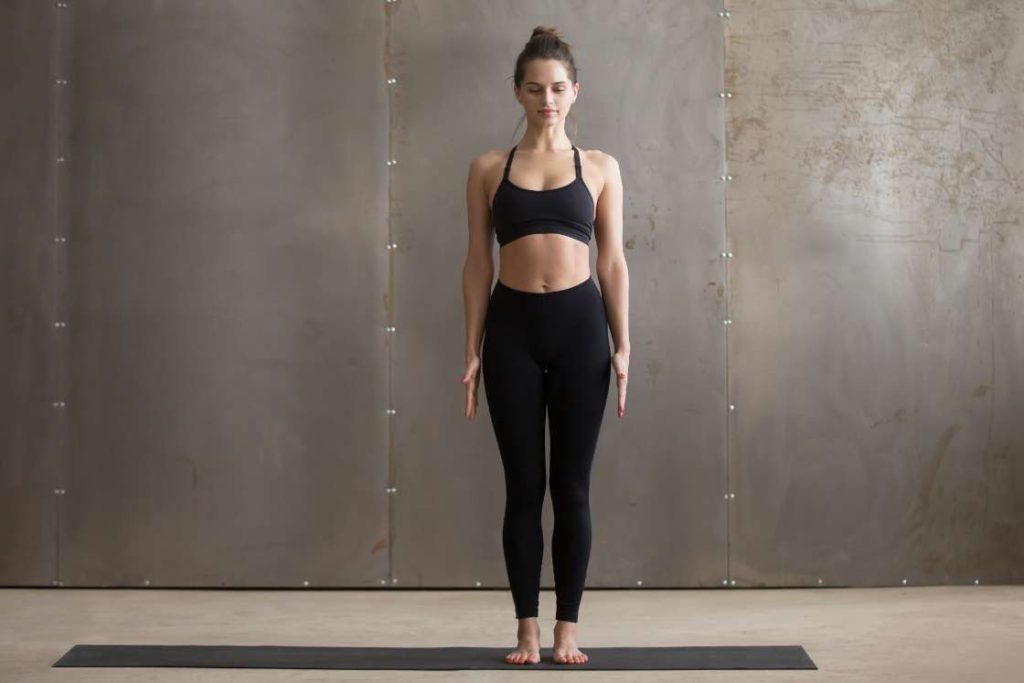
We start the Ananda sequence with mountain standing pose to stabilize the energy flow in your spine. Mountain pose is the best pose to start an Ananda sequence. In this pose, you simply stand with erect spine, and legs hip-width apart. You can add mudras like Anjali Mudra to this pose. Tadasana prepares your blood flow and nervous functions, to participate in further intense poses.
2. Tree Pose (Vrikshasana)
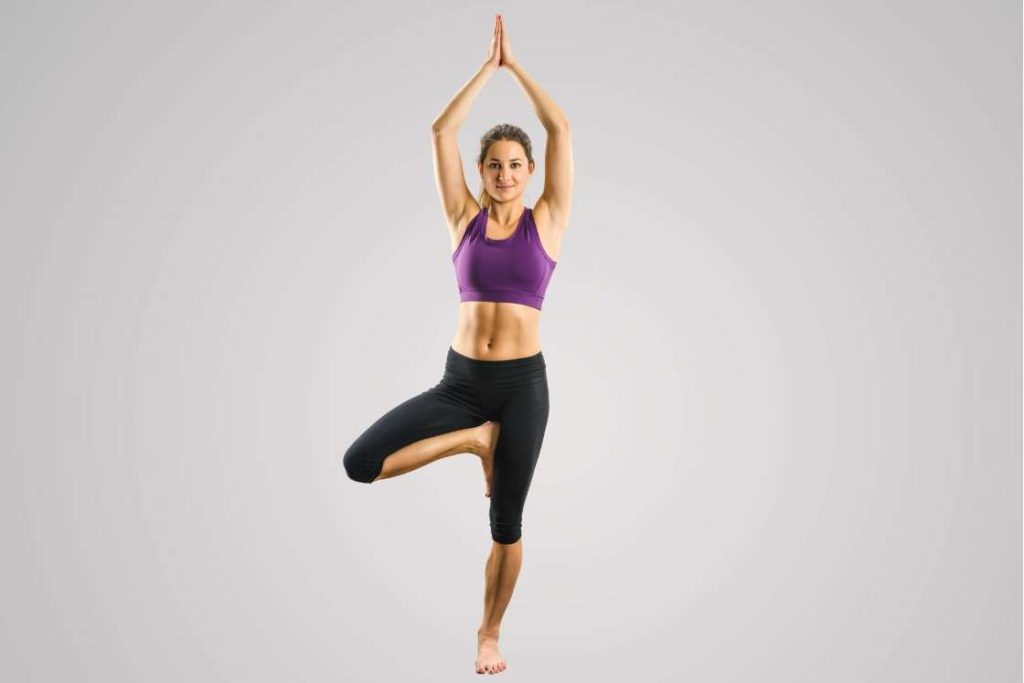
Vrikshasana builds up on the Tadasana, building up your balance and muscle engagement, and further regulating your blood flow and nervous functions. In Vrikshasana you stand with spine erect, balancing on one leg, and raise both your hands straight overhead. Vrikshasana helps you make your energy flow calm and controlled.
3. Warrior 1 Pose (Virabhadrasana I)
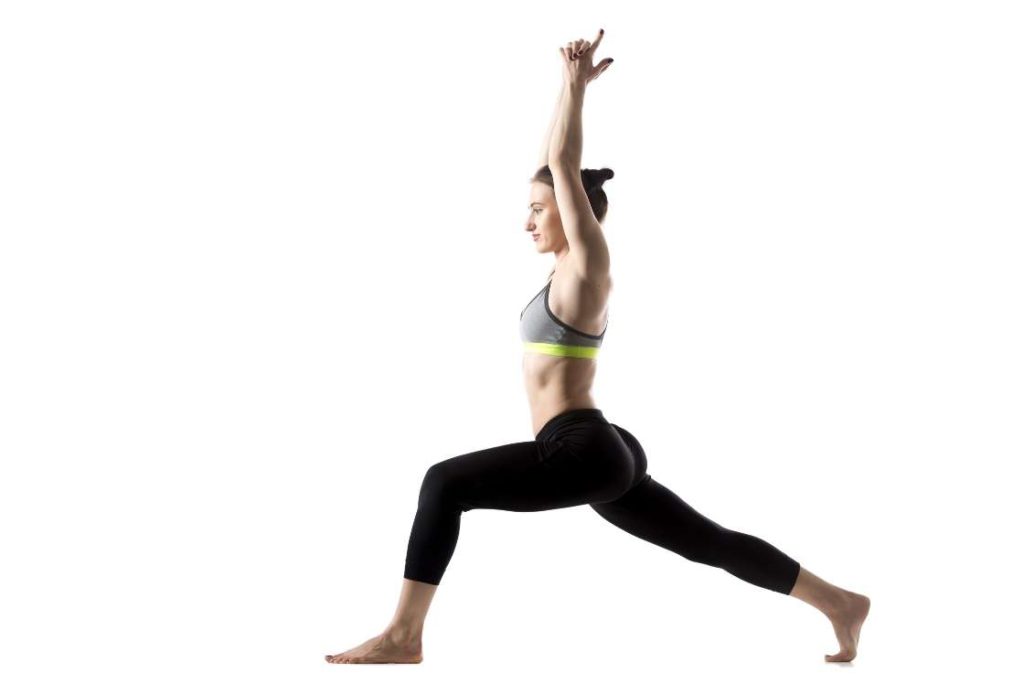
Virabhadrasana I increases the vitality of your energy flow. This pose draws more cosmic energy and increases the volume of energy flow in the body. The pose simultaneously prepares your nerves, muscles, and blood vessels to handle this increase of energy flow as well. Virabhadrasana is essentially a forward lunge with upward hand movements.
4. Warrior 2 Pose (Virabhadrasana II)

Virabhadrasana II has almost similar effect as Virabhadrasana I, with subtle differences. While Virabhadrasana I initiates the increase of energy vitality, Virabhadrasana II helps sustain the increased energy. Similarly this pose also trains the nerves, muscles and blood vessels to maintain their form as the energy flows through them. Virabhadrasana II is a sideward lunge with stretched out hands at the sides at shoulder levels.
5. Thunderbolt Pose (Vajrasana)

With Vajrasana you transition into a floor pose, from the standing poses. As compared to other floor poses, Vajrasana is quite centered and stable, making it the ideal pose to start your floor routine. The Vajrasana cleanses your bottom three chakras: Muladhara, Svadhisthana, and Manipura. The Vajrasana will help the energy flow to develop your inner strength. Biologically speaking, this pose is a great benefactor of digestion and metabolism. In Vajrasana you sit on your heels with folded knees.
6. Half Lord of Fishes Pose (Ardha Matsyendrasana)

Ardha Matsyendra is a spinal twist pose, that opens up your spinal axis and recharge it with vital energies. The Ardha Matsyendrasana is a seated pose, with torso a twists. This pose is a very relaxing pose and will instantly charge up your body center.
7. Bridge Pose (Setu Bandhasana)

Setu Bandhasana is a lying pose and has multiple benefits both in terms of your physical body and energy body. The Setu Bandhasana raises your pelvis off the ground, while your shoulders and feet remain in contact to the ground. The sedhu Bandhasana constructs your energy flow to act as bridge between your consciousness and that of the universe.
8. Shoulder Stand (Sarvangasana)
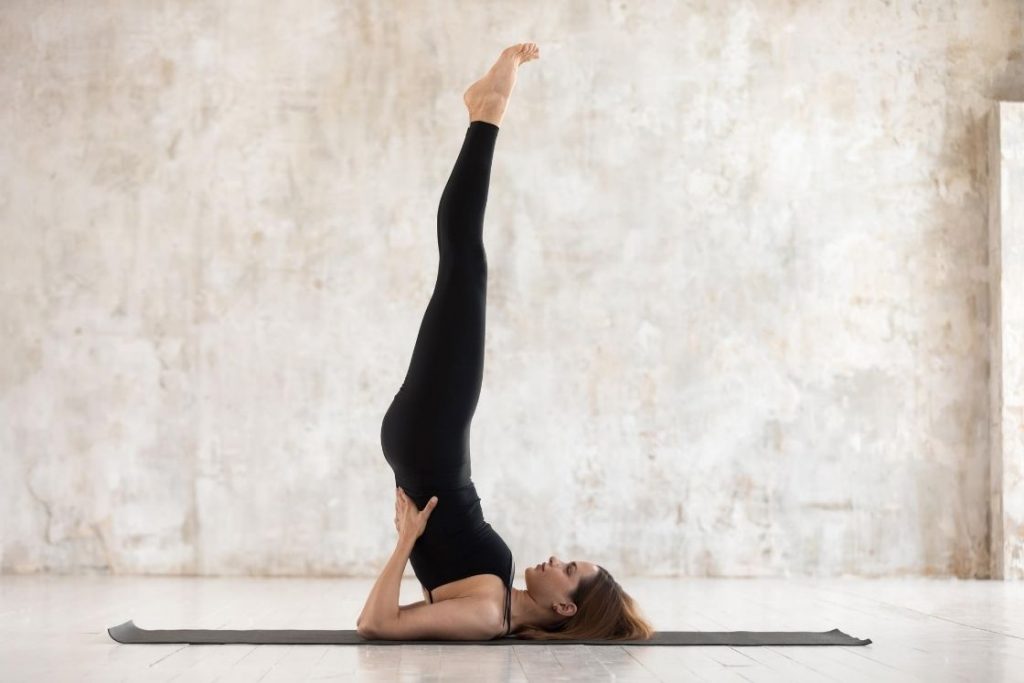
Sarvangasana is the much needed pose to draw all the energies towards your brain, or the biological center of your consciousness. This pose will cleanse your upper three chakras: Vishuddha, Ajna and Sahasrara. The sarvangasana that needs you to balance your body in an inverted upright posture, on your shoulders, is also a great immunity booster.
9. Corpse Pose (Shavasana)

Savasana is the ultimate relaxing pose. This pose is perfect for Ananda, as this pose very prominently merges the physical and spiritual aspects of yoga. Savasana is a pose in which your surrender all your muscles, movements, sensations, perceptions and thoughts. Savasana is the perfect blend of asana and dhyana. In this pose your body does less (it just lies like a corpse) and your consciousness does more. During this pose energy flows to every part of your body with a revitalizing effect.
How to attain Ananda?
Although spiritual potency is at the core of Ananda Yoga, it cannot be experienced at the early stages of practice. As a beginner, you will mostly engage in relaxing your mind and body. With a tense mind and body, higher spiritual and consciousness pursuits will prove impossible. A tired mind and body will be a constant distraction and limitation. Thus the Ananda poses, pranayama and meditation will first focus on relaxing your muscles, organs, blood vessels and nerves.
Emotional stability is the gateway to Ananda
Our emotional mind is a very powerful force. It can imprison you in a lifelong process of suffering or it can liberate you to transcend beyond your perception and physical existence. Thus your emotional mind can be a gateway that either leads your path to Ananda or obstructs your path to Ananda.
Thus once your mind is free of stress and anxiety, and well rested, it needs to start focusing on optimizing the emotional imbalances. Ananda yoga practices make you highly mindful of perception. It allows you to consciously regulate your perception, and stay away from drawing unproductive conclusions that disrupt the emotional stability.
Intellectual efficiency is important before Ananda
On the path to Ananda you will be tested by worldly distractions, moral and ethical defilers, and a diverse range of corrupt ideas, philosophies, and intentions. To prevent your innate spiritual innocence from being besmirched you will need to have a strong moral compass, appropriate wisdom, careful critical thinking and reasoning ability, and an effective decision-making system. The Ananda Yoga practices help you develop your belief system and cognition, in a way that is well equipped to face the challenges in the pursuit of eternal bliss.
Ananda Yoga Benefits
The core benefit of Ananda Yoga is being at bliss, a state of divine joy. We all experience joy occasionally in our lives, but there is always an aspect of materialism attached to it, which makes the joy impure (polluted with earthly emotions.)
Ananda yoga teaches you and your body to optimize your energy flow and recharge your body with the vital life force. The Ananda (joy) you feel from Ananda yoga practice is triggered solely by a harmonious flow of energy, which makes it innocent, serene, and universal. This base benefit of Ananda yoga that can span out to yield additional beneficial outcomes:
- Well relaxed mind and body
- Improved mind and body healing
- Blockage removal from the energy chakras
- Stress and anxiety relief
- Long term self-contentment
- Sound sleep
- Clarity of thoughts and perception
- Improved concentration and focus
- Enhanced Cognition and memory
- Increased blood flow and blood oxygenation
- Efficient metabolism, nervous functions, immunity and hormonal secretion.




